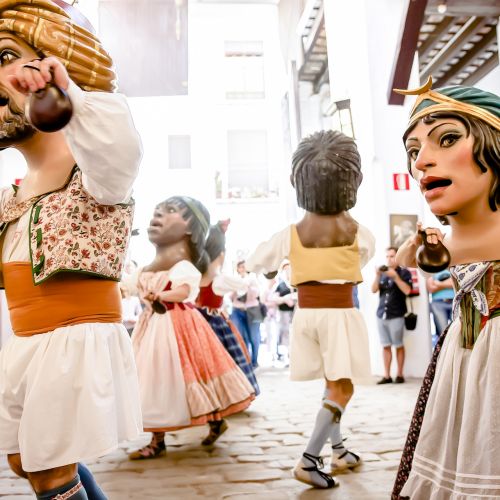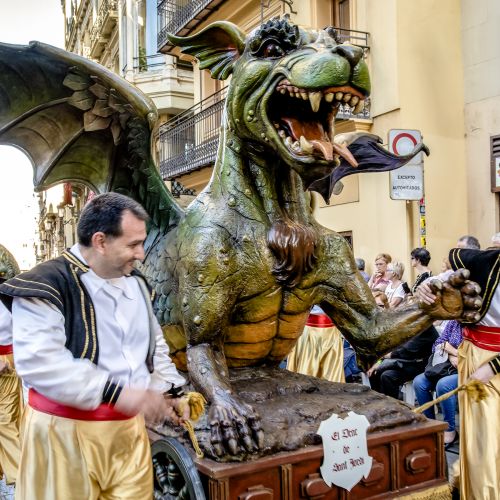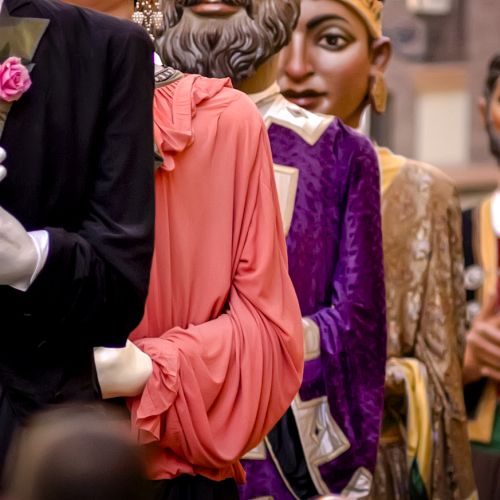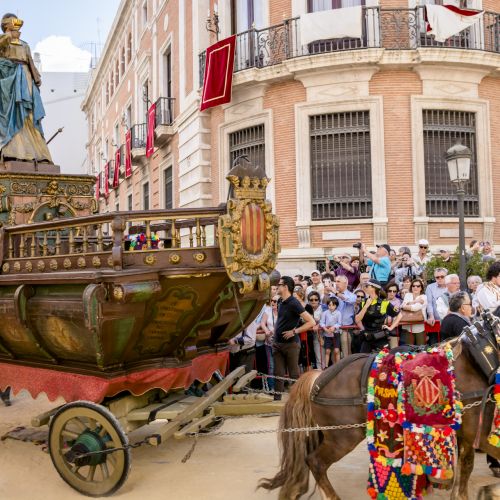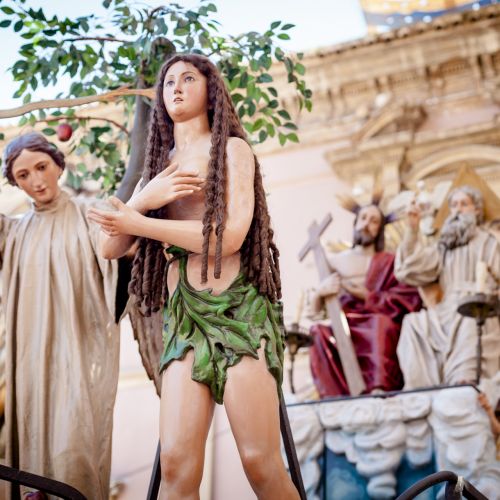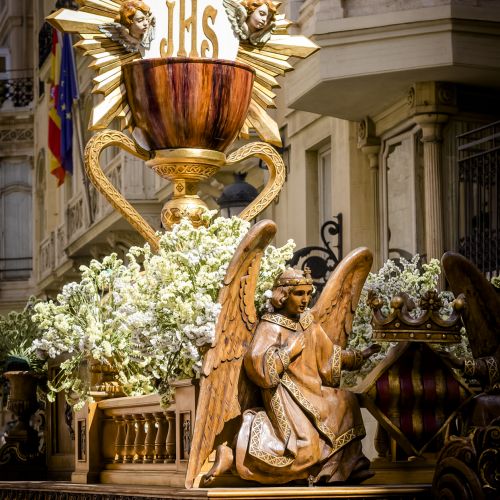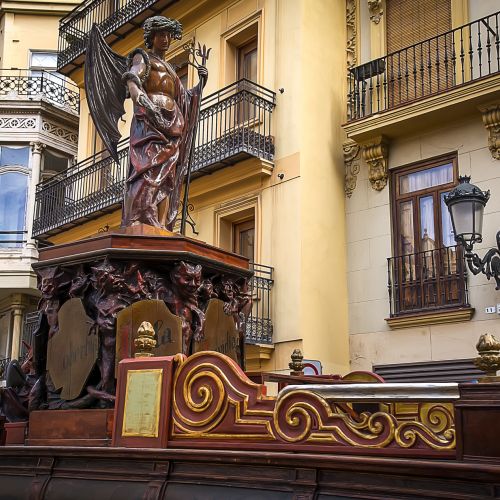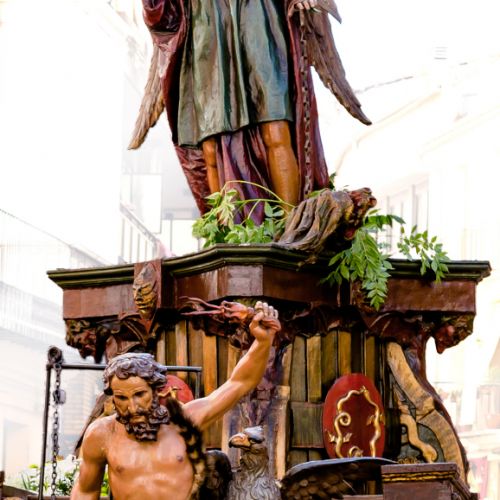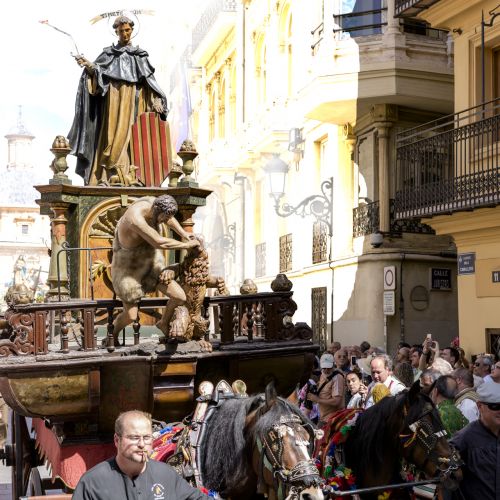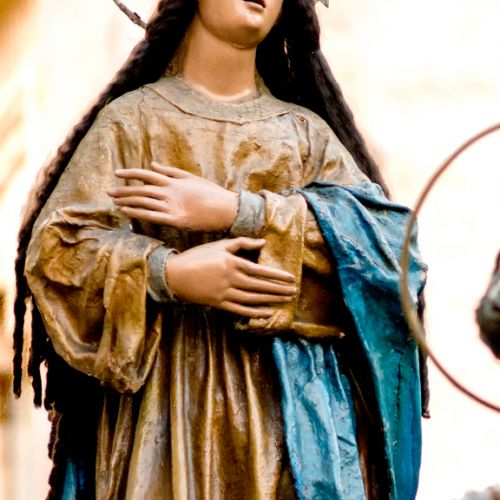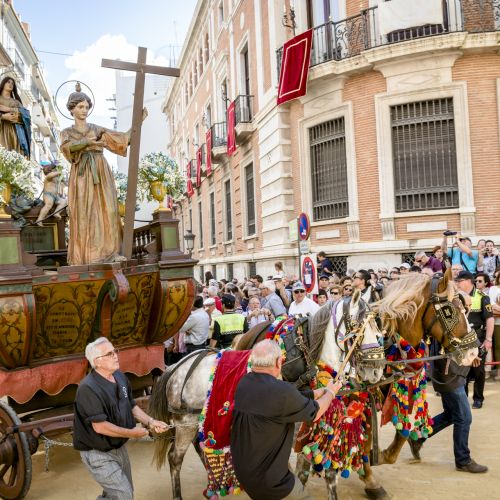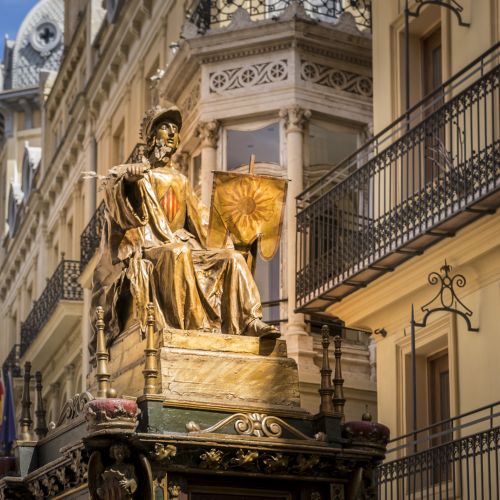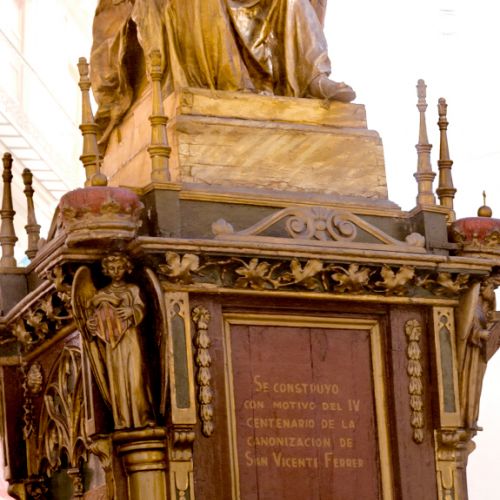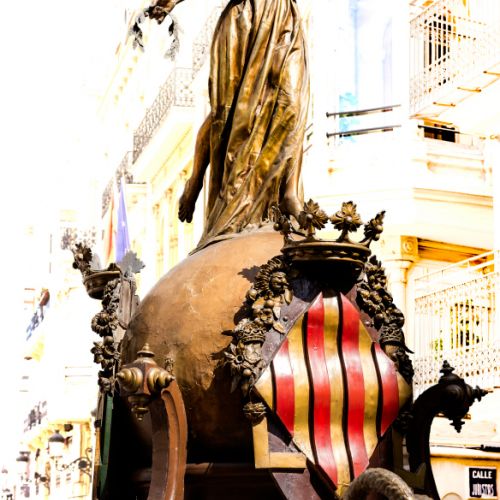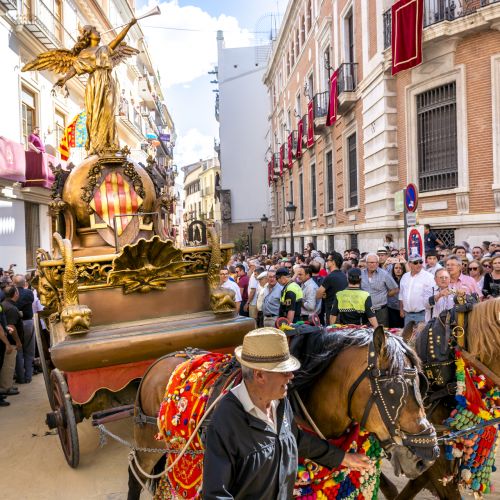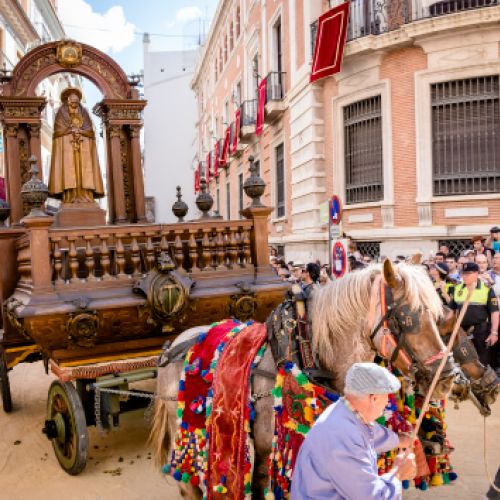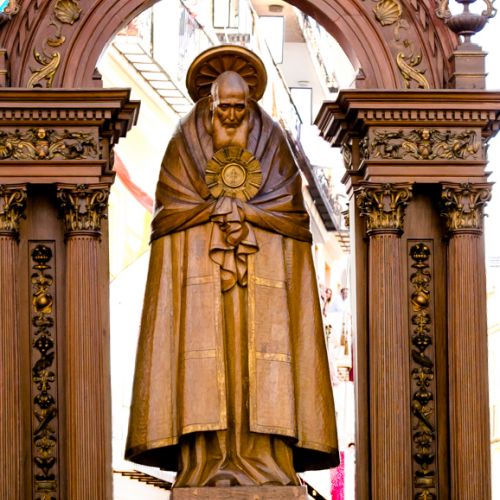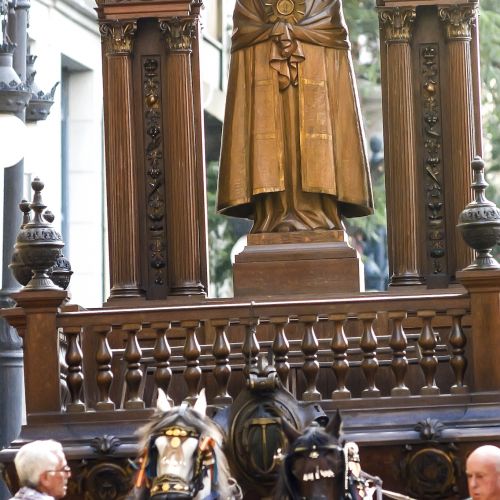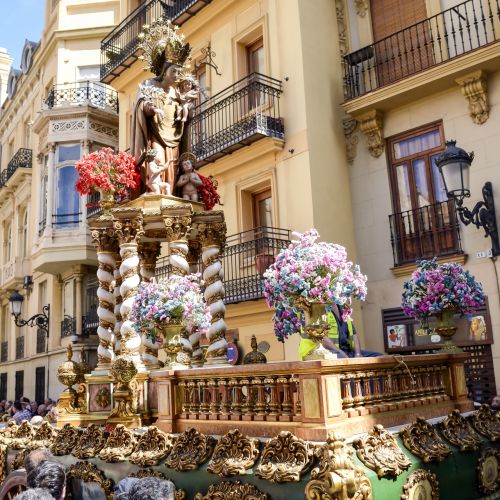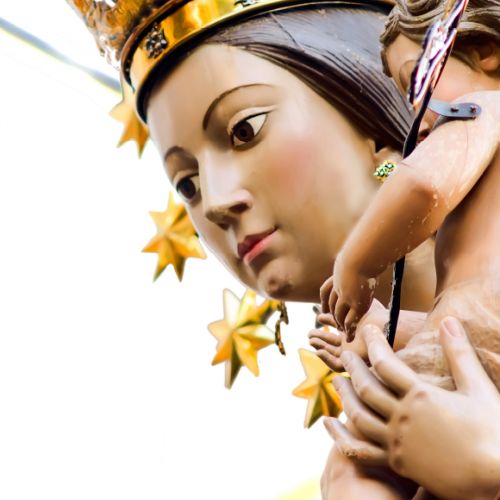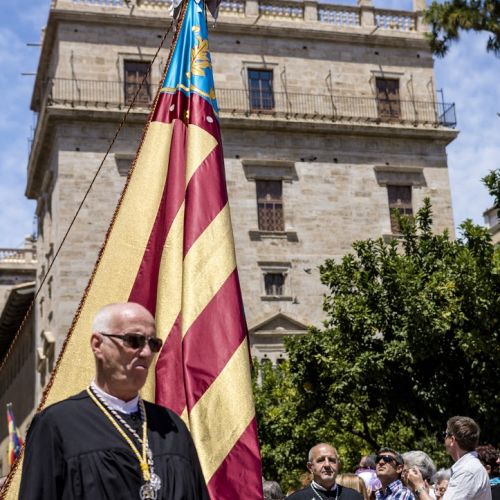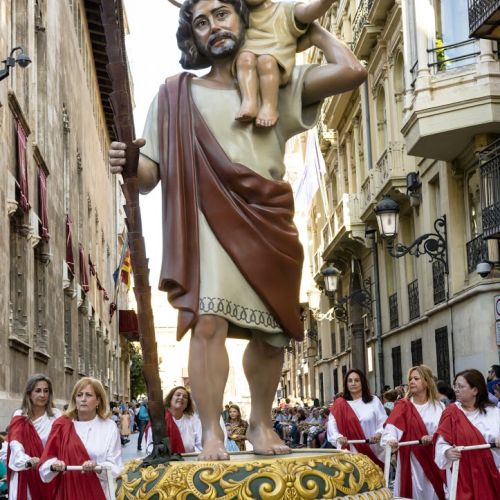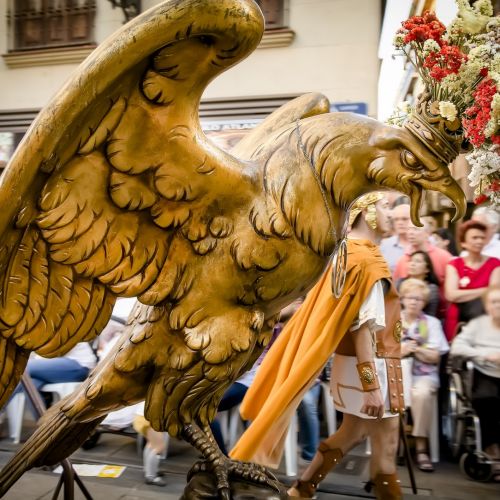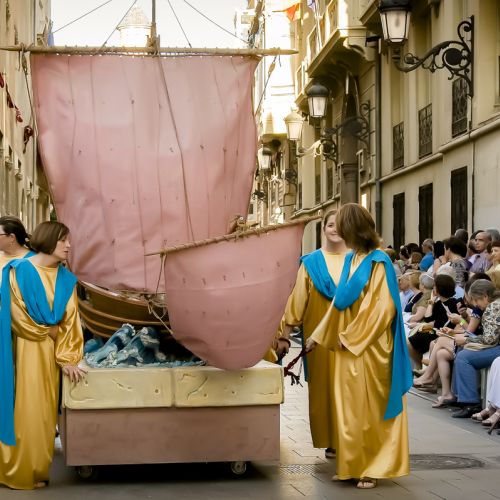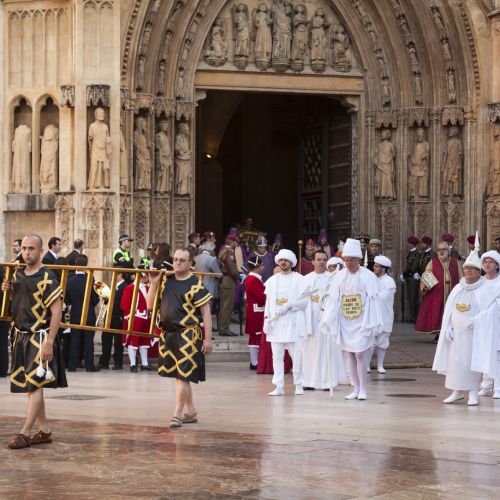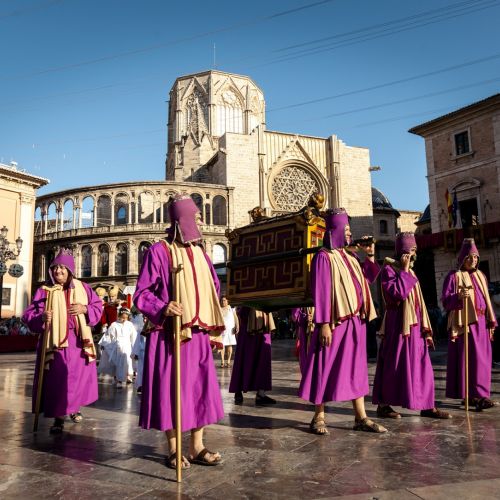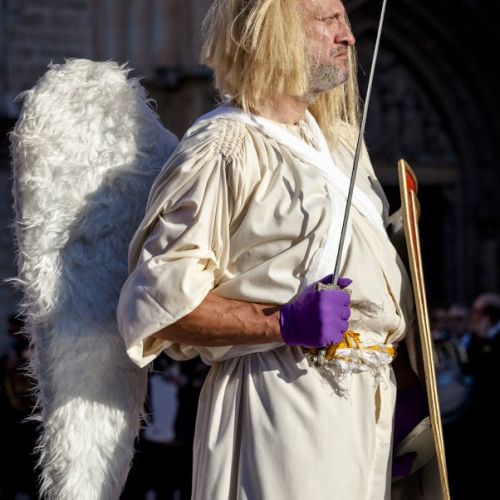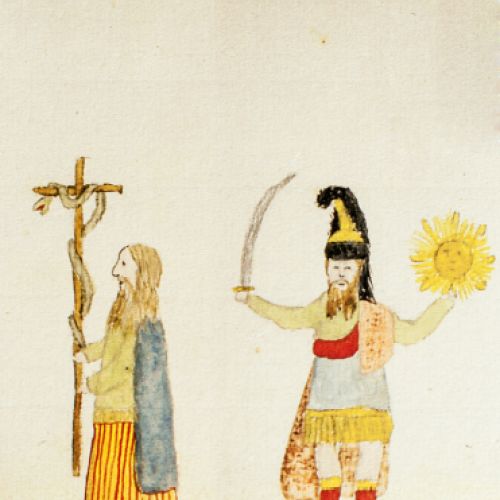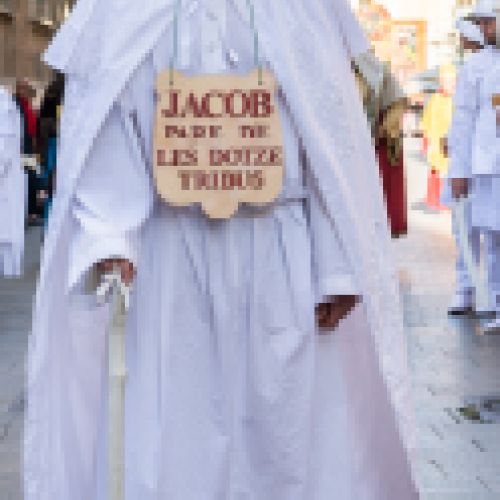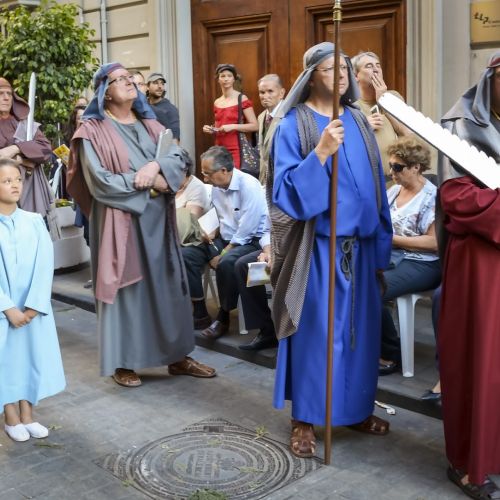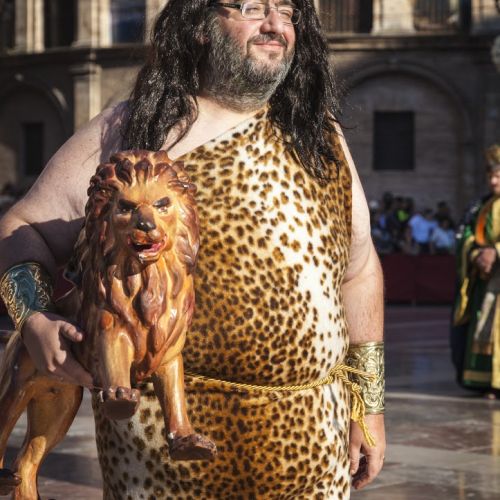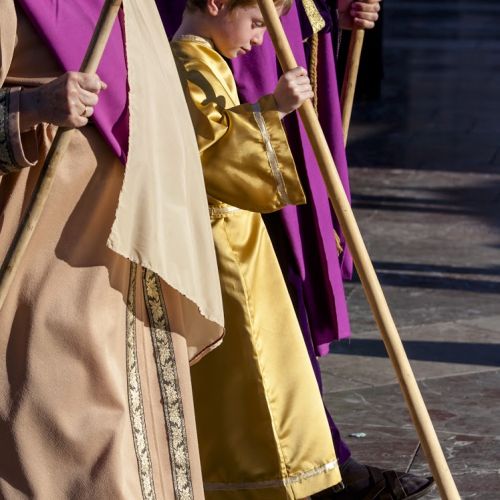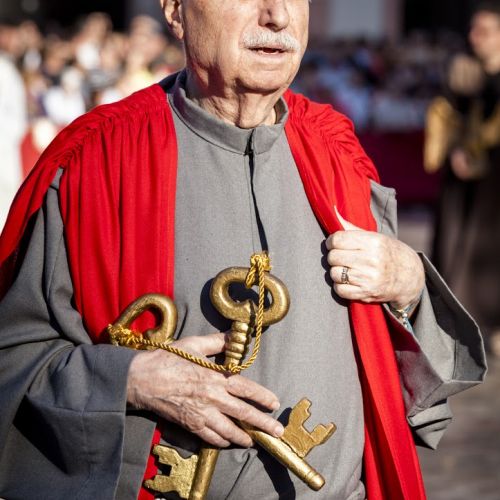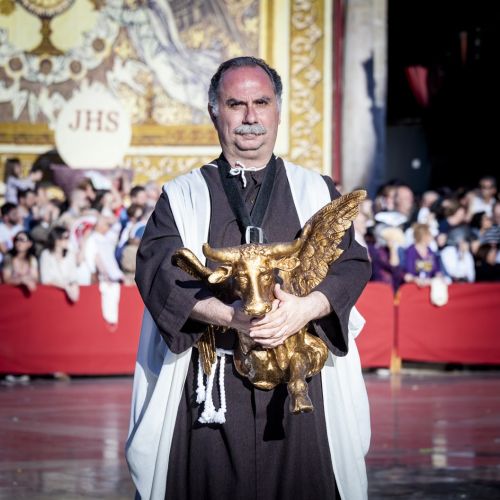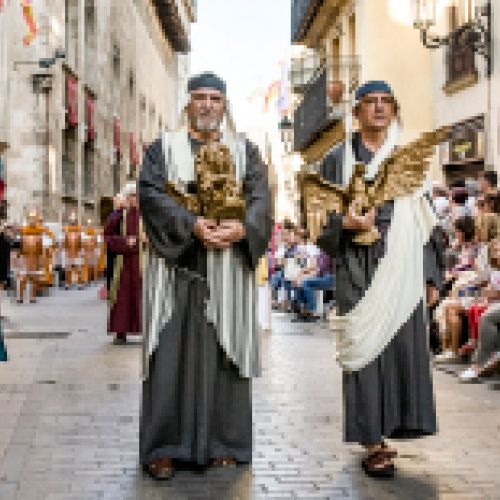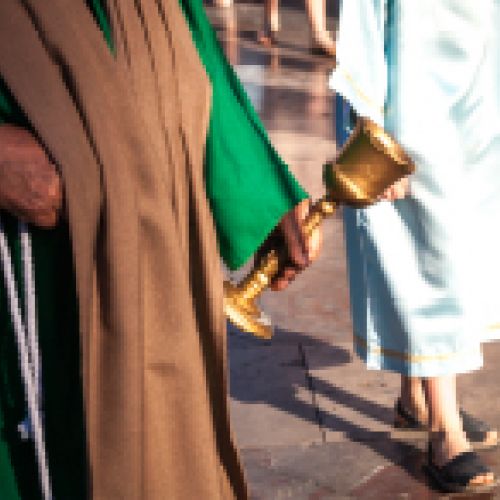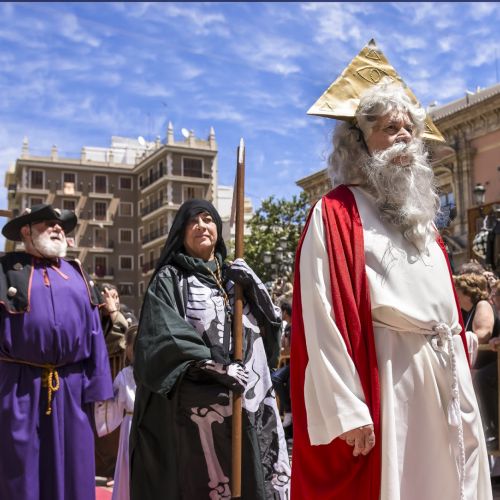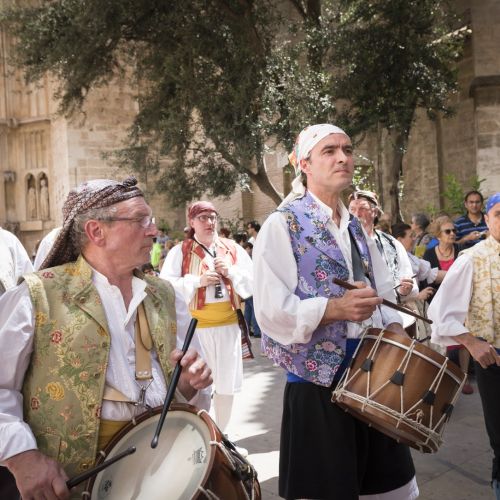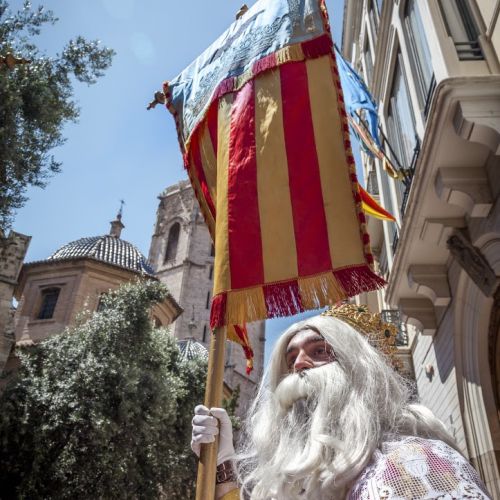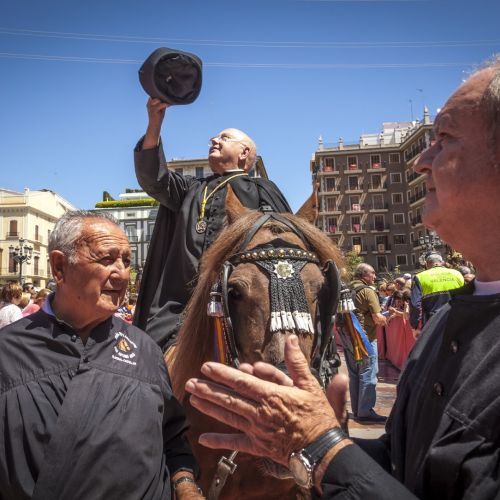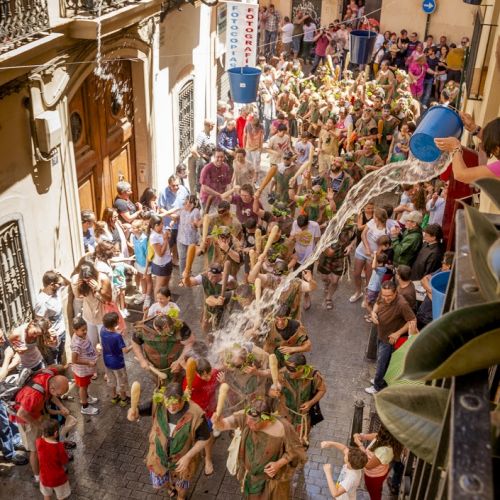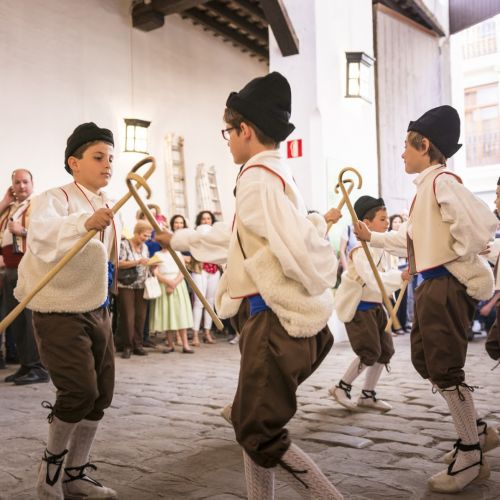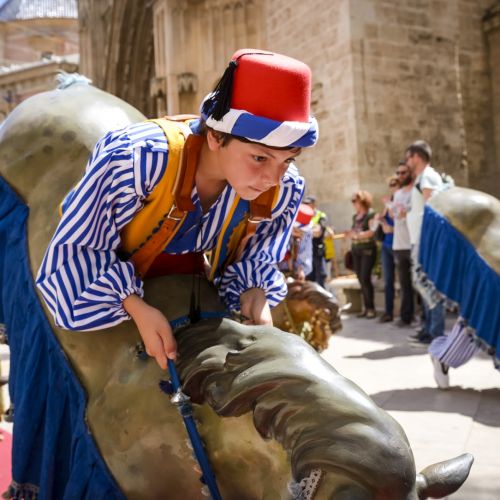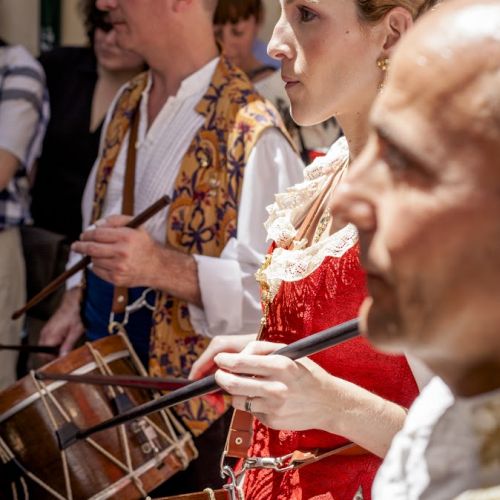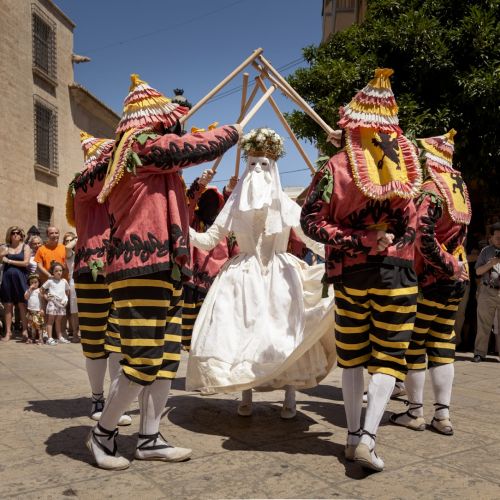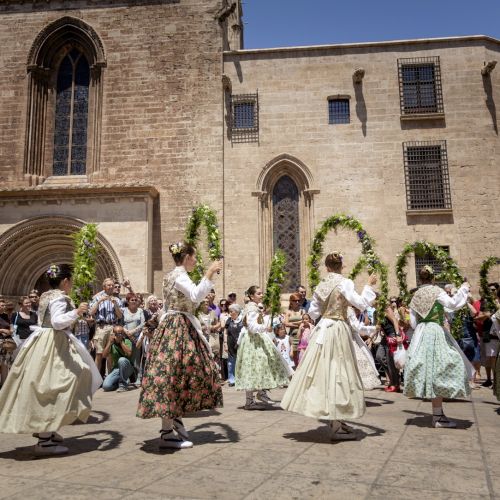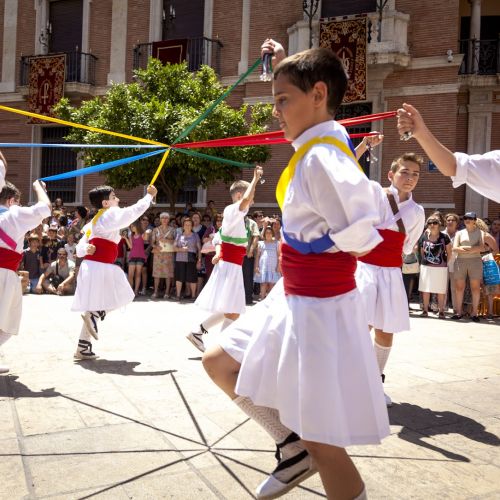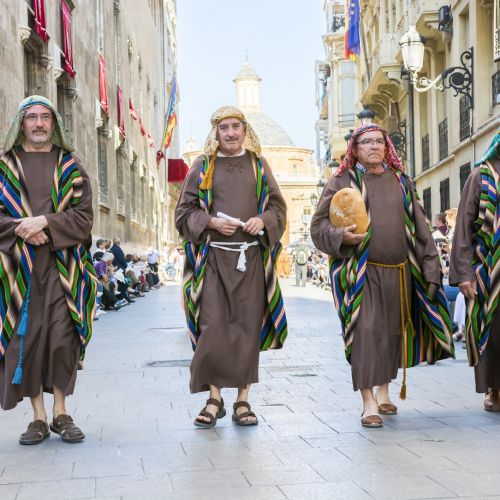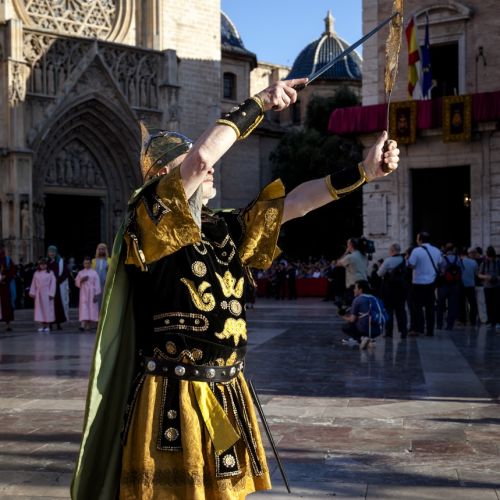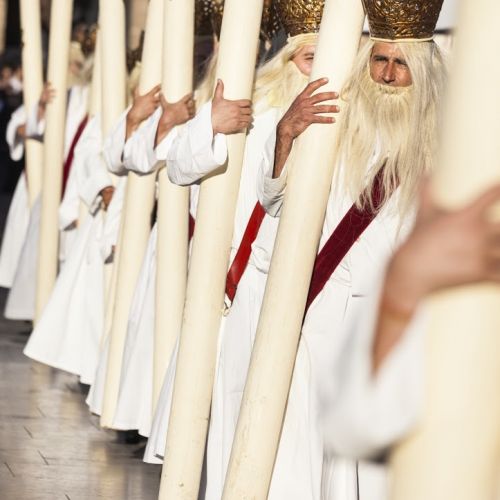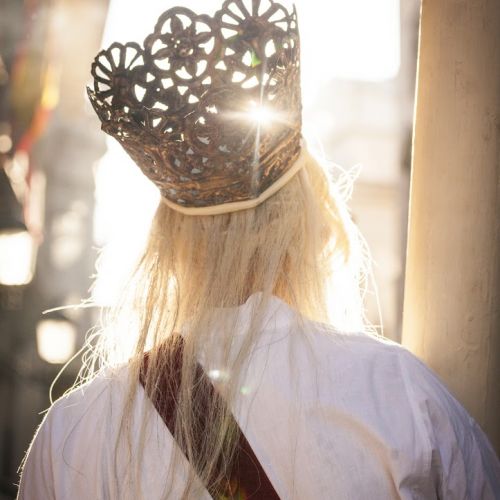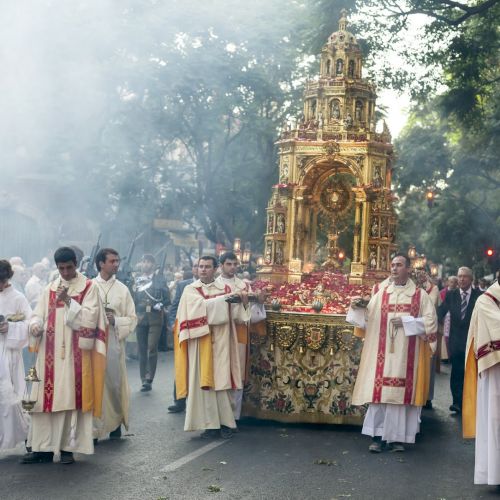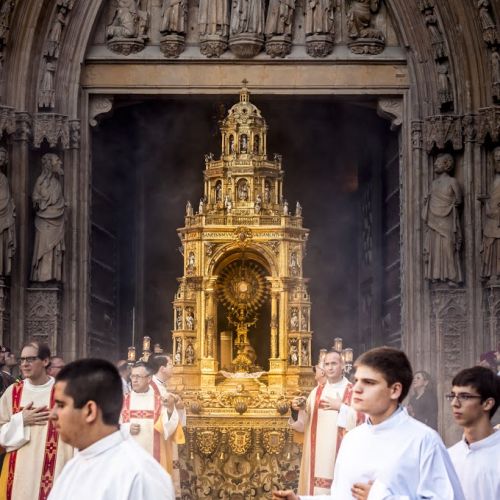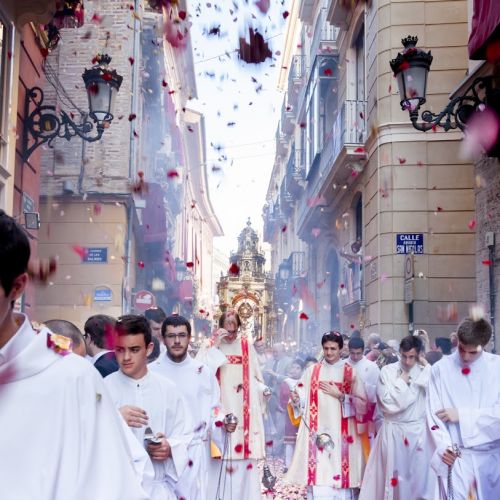CORPUS CHRISTI MUSEUM - CASA DE LES ROQUES
Corpus Christi Museum
Of a high historic and artistic value, the Corpus Christi Museum, Casa de les Roques guards eleven roques or triumphal carriages taken out during the Corpus Christi processions, pulled by horses ornamented in a traditional style. The reproductions of mythological creatures displayed in the parade are remarkable: Saint John’s dragon, Saint Martha’s Tarasque, the Cuca Fera (a monstrous dragon) that accompanies Saint Margaret. The same can be said of the image of Saint Christopher, the Ark of the Convenant, Jacob’s Ladder, Saint Nicholas’ Boat, the gegants i cabuts (giant figures and large-headed ones), and the garments worn by the procession participants. The Museum also has a number of rooms where different items from the procession are exhibited e.g. photographs, cavallets (small horse figures) or the Rotllo del Corpus (scroll).
Next to Serrans Gate, the Casa de les Roques was built in the 15th century as a warehouse for the triumphal carriages and the objects used in the Corpus Christi procession. Popularly known as roques, the museum was named after them.
Opening:
.jpg)
- The Corpus Christi of Valencia
- Giants, Big-Heads and Bestiary
- Faith
- The Holy Trinity
- Holy Chalice
- The Diablera
- Saint Michael
- Saint Vincent Ferrer
- The Immaculate Conception
- València
- Pheme
- The Patriarch
- The Virgin of the Defenceless
- Allegories
- Pedagogy and history of the party
- The Cavalcade of the Invitation
- The Dances
- The Procession
- The Monstrance
-
The Corpus Christi of Valencia
The Corpus Christi has been the main feast day for centuries, the great festival of the city. It was celebrated for the first time in 1355. It has both a religious character and an identity value; it is rich in symbolism and representations about the mystery of life.
Its most singular element is the rocks, so called because of their size and grandeur. The rocks are triumphal carriage floats carrying allegorical figures on which scenes related to the Corpus Christi celebrations are performed.
The Corpus Christi is currently celebrated on the eighth Sunday after Easter Sunday.<
-
Giants, Big-Heads and Bestiary
Giants and Big-Heads are highly prized symbols in popular culture who introduce a playful component to the celebration. They represent the different parts of the world to which the Eucharistic message must reach.
The fight against evil is present in a singular bestiary in the form of hagiographic allegories such as Saint Margaret and the cucafera (a huge turtle-shaped monster), Saint George and the Dragon, or Saint Martha and the tarasca (a fearsome legendary dragon-like mythological hybrid).
-
Faith (1542)
This rock was formerly called The Garden of Eden (1512). Faith is blindfolded and holds a chalice in her right hand while València is represented in the background. It may symbolize the establishment of the Catholic religion in the ancient Kingdom of Valencia.
-
The Holy Trinity (1674)
The main figure in this rock represents the Holy Trinity. Adam and Eve, expelled from the Garden of Eden by the angel, are at the front, next to the Tree of the Knowledge of Good and Evil. It symbolizes belief in the Trinitarian mystery.
-
Holy Chalice (2001)
This rock is crowned by a reproduction of the chalice used at the Last Supper, which is venerated in the Cathedral of València since 1435. 33 socarrats, fired clay tiles that show scenes and characters of the procession, appear on either side.
-
The Diablera (1511-1542)
The Devil is the popular denomination of the rock previously known as the Rock of Hell or Rock of Pluto, god of the underworld who presides over the afterlife.
It seems to signify the time of Muslim domination over València.
-
Saint Michael (1542)
This rock was built from a former rock called The Last Judgment (1535). The main figure represents archangel Michael as the custodian of Paradise. Jupiter, King of the Gods in Ancient Roman mythology, can be seen at the front.
-
Saint Vincent Ferrer (1665)
This rock was originally dedicated to saint Vincent of Saragossa, deacon and martyr (1512). St. Vincent Ferrer is depicted as an angel of the Apocalypse. We can see Samson at the front fighting a lion with his bare hands, symbolizing the fortitude and supernatural power of the Valencian saint.
-
The Immaculate Conception (1665)
It was originally known as Maria del Tedeum (1542). The main figure represents the Holy Virgin Mary (The Purest One). saint Helen stands at the front while Judith appears at the back. It symbolizes the acknowledgement of the mystery of the immaculate conception of Mary.
-
València (1855)
This rock was built to celebrate the fourth centenary of the canonization of saint Vincent Ferrer using decorative motifs from the Golden Hall of the old City Hall. The main figure represents an allegory of València.
-
Pheme (1899)
The main figure of this rock, built to participate in a cavalcade at the Great Fair of València, is Pheme, the personification of fame and renown in Greek mythology. She holds a long trumpet in her hand and spreads news of the glories of València and its people.
-
The Patriarch (1961)
This rock was built to celebrate the canonization of Saint John of Ribera, archbishop of València (1568-1611) and founder of the Royal College of Corpus Christi. The main figure represents the saint and is surrounded with elements related to his life and work.
-
The Virgin of the Defenceless (1995)
This rock commemorates of the fifth centenary of the invocation of the Virgin of the Defenceless. The sculpture of Our Lady, which takes its inspiration from the gothic image that can be found at the Capitolet Chapel, rests on a baroque style shrine.
-
Allegories
The colourful biblical and civil allegories of the Corpus have become part of the local collective imagination. Among the biblical allegories we can see Jacob's ladder and the sacrifice altar with the seven-branched candelabrum, also know as the eagles, which symbolize St. John the Evangelist and the bond with the Church of Rome. The Custodian Angel of the city, the heralds, bugles and drums, as well as the Senyera (the Valencian flag), represent the civil component of the festival.
-
PEDAGOGIA I HISTÒRIA DE LA FESTA: ROTLLO, ATRIBUTS I AMICS DEL CORPUS.
The pedagogical aspect of the processions and the mystery plays of the Corpus is exemplified in the Corpus Roll. Dated in the first third of the nineteenth century, it illustrates in a sequential way, with drawings in watercolour and cuts of prints on a 31 metres long paper strip, the parade of the Convit (invitation) and the procession with its elements and characters.
The members of the association Friends of the Corpus and its predecessor, the Grup de Metxa, have since 1973 played the characters who participate in the processions. They can be identified by the attributes and symbols they carry, which come from the Catholic iconography.
-
The Cavalcade of the Invitation
Known since 1516, it was an invitation from the city's jurors, through the chaplain of the rocks, to the authorities and the people to attend the solemn procession of Corpus Christi. The following elements take part in this procession: the Giants and Big-Heads, who represent the various parts of the world, the traditional allegorical Dances, and the Mystery plays, like that of King Herod, where a troupe of men represent the soldiers of the massacre of the Innocents. The cavalcade culminates in a popular water fight.
-
The Dances
The dances are the most popular part of the Cavalcade of the Invitation. The Moma, a dance with sticks, is worthy of mention. The Moma, in white, represents the virtue that defeats the seven momos (deadly sins). Other traditional dances are La Magrana, (The Pomegranate), Els Cavallets (the Little Horses) and Els Arquets (the Little Arches), which express the Eucharistic adoration. Els Turcs (The Turks) is a dance with a warlike component while Els Llauradors (The Farmers), Els Pastorets (The Little Shepherds) and Les Vetes (The Ribbons) are linked to local folk dances.
-
La Processó
The procession of the Corpus Christi of València is characterized by the large presence of characters from the Old and New Testaments with the intention of spreading and consolidating the Catholic doctrine among the people. Many of these characters, like the grandfather of the dove (Noah), Saint Michael, and Els cirialots (elders who worship the throne of God according to the Apocalypse), became popular referents of the feast.
-
The Monstrance
The Monstrance that closes the Corpus procession is kept in the Cathedral of València. This piece was made of nearly 20,000 parts between 1940 and 1954 using 600 kilograms of silver and 8 kilograms of gold. At four metres high and two metres wide, it is considered the largest in the world.


